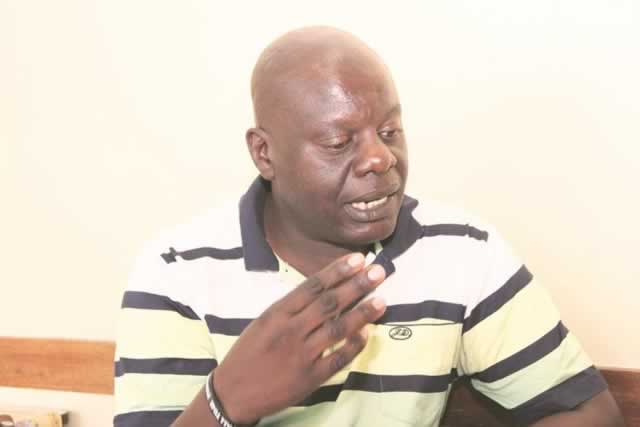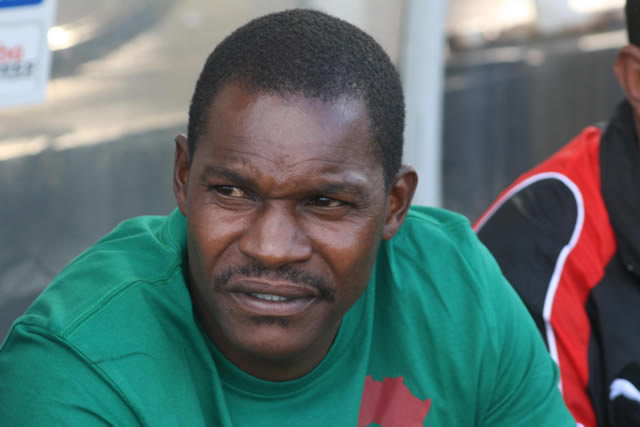Examining the big rivalry

Robson Sharuko Senior Sports Editor
ZIMBABWEAN academic Lyton Ncube, whose research into the rivalry between Dynamos and Highlanders triggered a hurricane of debate yesterday, reveals that he had to transform himself from being a diehard DeMbare fan to a neutral researcher to try and produce a credible paper.
Ncube is a Media and Society Studies lecturer at the Midlands State University in Gweru, who spent two years studying the intense rivalry between DeMbare and Bosso fans as part of his PHD thesis, which focuses on football in this country, with the University of Natal in Durban, South Africa.
He concluded that the rivalry between Dynamos and Highlanders is so fierce that it is at par with some of the world’s greatest football rivalries — Al Ahly versus Zamalek in Egypt, Celtic versus Rangers in Scotland, Real Madrid versus Barcelona in Spain and Manchester United versus Liverpool in England.
“There is a great rivalry that exists between Dynamos and Highlanders supporters. This rivalry is contested on and off the pitch,” Ncube notes.
“Indications are that this rivalry is based on real or perceived historical and contemporary ethnic and regional ‘enmities’ between Zimbabwe’s two dominant ethnic groups — the Shona and Ndebele.”
Ncube, who embedded himself with both Dynamos and Highlanders fans for two years, reveals that he has always been a DeMbare supporter.
“It is also worth mentioning that I have been a passionate Dynamos FC supporter from a young age and have been attending Dynamos/Highlanders FC matches as a supporter of my favourite team,” Ncube says in his research paper.
“However, this research presented me with a challenge to (re)negotiate my identity from a supporter to a researcher. Dynamos FC supporters were shifted from being colleagues to become subjects of research.
“I, therefore, made an attempt to minimise bias as much as possible, particularly towards Highlanders FC, given that they are Dynamos FC’s biggest rivals in Zimbabwe.
“Such biases could have prejudiced this football ethnography. However, my beliefs, background and feelings are part of the process of knowledge construction in this study.”
Ncube says he based his research on 25 matches, which he targeted for his project, including games at Ascot in Gweru, which were not necessarily head-to-head exchanges between the two giants but where their rivalry would still be pronounced.
“I was a spectator purposively at 25 selected Premier Soccer League (PSL) matches that featured, at least Dynamos FC or Highlanders FC at the following stadia — Rufaro Stadium, National Sports Stadium (both in Harare), Barbourfields Stadium (Bulawayo) and Ascot Stadium (Gweru),” says Ncube in his paper.
“Out of these 25 matches observed, six of them included clashes between Dynamos and Highlanders, three of these matches were played at Barbourfields Stadium (Bulawayo) while two were played at Rufaro Stadium (Harare) and the remaining one at the National Sports Stadium (Harare).
“During the period of observation at football stadia, attention was paid in particular to songs, chants, slogans and folk ditties sung by supporters. Debates, controversies and discussions (which) ensued among supporters were also noted.
“I participated in the singing and dancing on the terraces but restrained myself from involvement in violent activities such as hurling insults, ejecting rival supporters or meting out beatings.
“As a Dynamos supporter, I was often tempted to join in the banter and singing out of loyalty to the club. Indeed, my identity often overlapped between the two poles of supporter and researcher.
Ultimately, I learnt to occupy a position in-between these two poles, which allowed for the ‘thickest’ description.
“Neutrality and impartiality were replaced by self-reflexive research practice in situ.”
The MSU lecturer reveals that there were instances when he had to dress as a Bosso fan, in black and white colours, to embed himself with the Highlanders supporters although his disguise betrayed him at some point.
“I rotated the periods in which I would go and watch either Dynamos or Highlanders. On a day dedicated to studying Dynamos supporters, I would put on a Dynamos supporters replica jersey,” he says in his paper.
“The same ‘ritual’ was adhered to when studying Highlanders supporters. I would dress and perform like a Highlanders supporter. While I had some difficulties in accessing the Highlanders supporters’ community, Dynamos supporters quickly welcomed me into their community since I am a relatively well-known Dynamos supporter who is not only familiar with the Dynamos fan culture, rituals, songs and dances but had also established a wide network of contacts and socialised with the participants on several occasions prior to the study.
“A level of trust and empathy already existed between me and the ‘blue-half’ participants. Although there is currently no statistical research to support this, the general view is that Dynamos supporters are predominantly Shona speaking, as Shona is my mother tongue this made communication easier.
“Researching Highlanders FC supporters was much more difficult. Highlanders FC supporters are predominantly Ndebele speakers and thus a language barrier posed a hindrance to me from the outset.
“Granted, I can speak and understand a range of basic to proficient Ndebele, my accent, however, is not ‘naturally’ Ndebele.
“Such an accent betrayed me more than once, at one point leading to near-violent scenes that included ejection from seats and confiscation of camera equipment.
“This rejection happened despite taking care to don black and white Highlanders regalia as camouflage. Eventually, a data collection method that included minimal friction was arrived at.
“I initiated snowball-type ‘thick description’ which meant following up on introductions by my friends and sports journalists in Bulawayo to ‘informal gate-keepers’ at the Soweto stand of the Barbourfields Stadium as a way not only of ‘currying favour’ but also of subtly embedding myself in the ‘Soweto culture’.
“It was necessary to blend in and to take on a new identity that approximated to Bosso11 ‘culture’. Over two years, contact with ‘die-hard’ Highlanders supporters grew.”











Comments